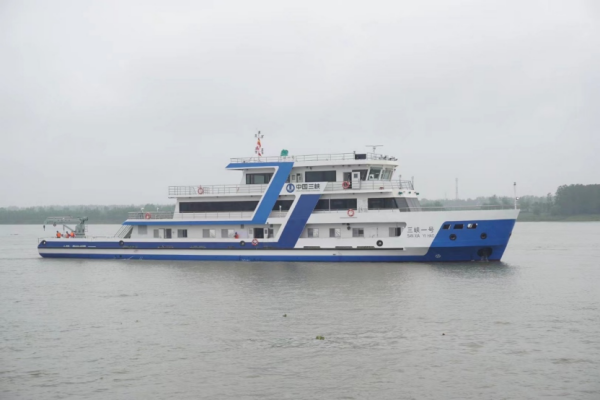The Yangtze River Basin’s largest inland scientific research vessel, Sanxia No.1, has been commissioned for ecological conservation along the river.

Sanxia No.1, the largest inland scientific research vessel by tonnage in the Yangtze River Basin [Photo/sasac.gov.cn]
This cutting-edge vessel was built by China Three Gorges Corporation’s Basin Management Center in fifteen months.
The vessel, essentially a floating laboratory, is primarily tasked with conducting scientific monitoring and research in critical areas such as the water environment, hydrology and sedimentation, and geological hazards along reservoir banks in the Three Gorges Dam area. It will also support routine patrols, providing a solid scientific foundation for reservoir regulation and environmental protection in the region.
Measuring 56.7 meters in length, 9.8 meters in beam, and 3.5 meters in depth, the vessel has a draft of 2.1 meters and a top speed of 24 km/h. It can accommodate 7 crew members and 30 researchers at the same time.
The vessel is equipped with well-designed functional zones, including a sampling room, dry and wet laboratories, and a conference room. It can automatically monitor 11 key water quality indicators in real time during navigation, and enables seamless data transmission and integration with onshore laboratories.
The vessel has a 3-ton hydraulic crane at the stern for lifting modular monitoring equipment, and telescopic sampling arms on both sides that can collect samples from depths of up to 200 meters. A central moonpool with a vertical lift system allows for the use of sonar and other underwater sensors. The deck also includes a helipad for hyperspectral drones, enabling integrated monitoring from air, surface, and underwater.
With its deployment, Sanxia No.1 is expected to significantly enhance the real-time, dynamic, and precise monitoring capabilities of the Three Gorges reservoir ecosystem, contributing scientific support to safeguard the Yangtze River.
(Executive editor: Yuan Ting)